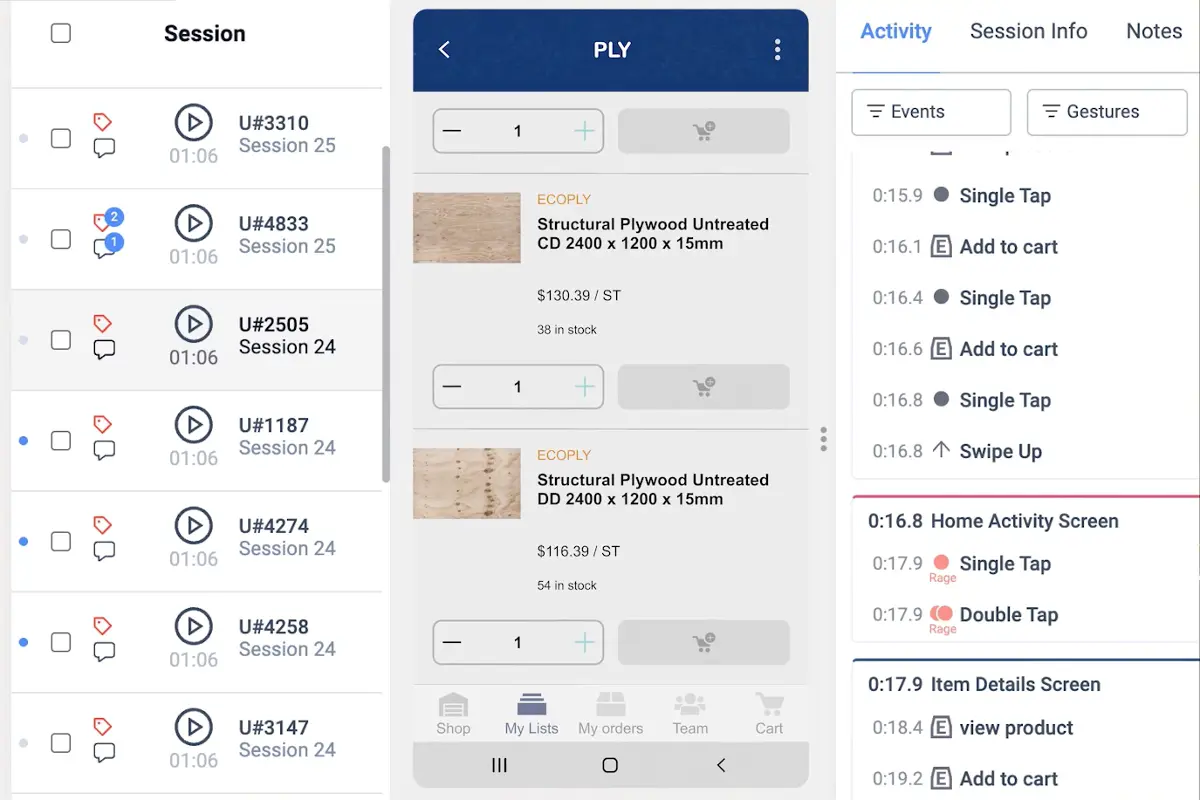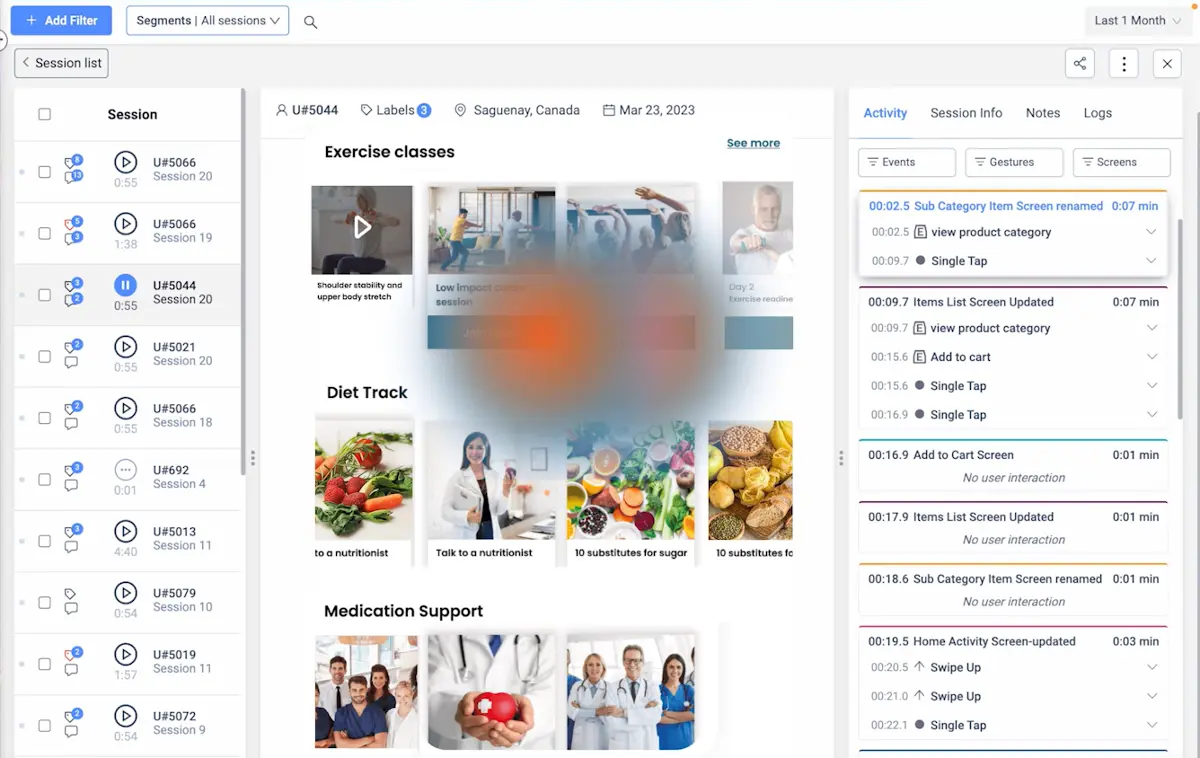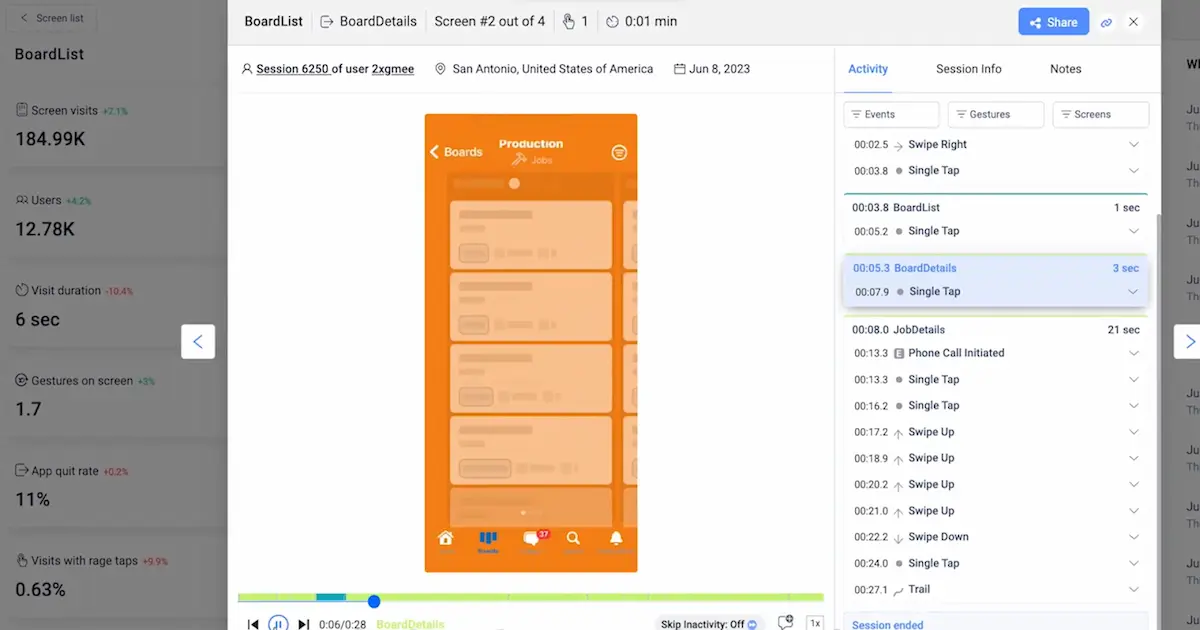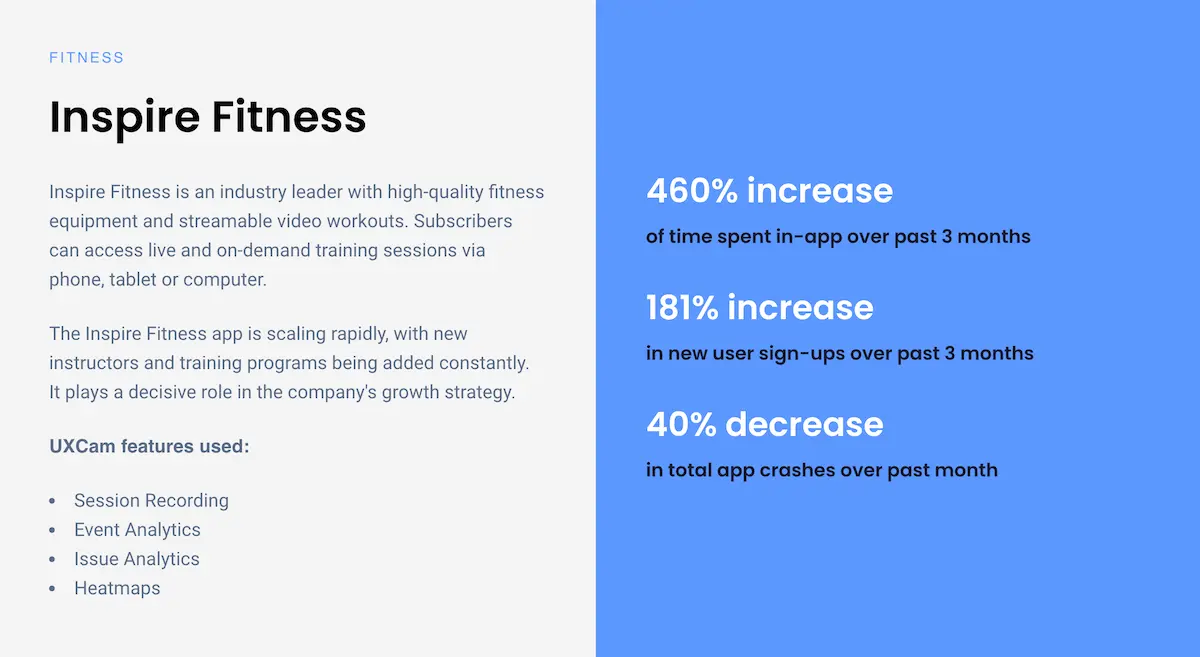Back to blog
7 MIN READ
5 Examples of Product Strategy and How to Create One
PUBLISHED
11 February, 2025

Product Analytics Expert
Developing a meticulous mobile app strategy is crucial for achieving the app's intended purpose. A comprehensive strategy saves time and money and avoids unnecessary features, code redundancies, and updates.
However, not everyone starts the development process with a well-defined strategy. In 2021, 35% of product teams desired a more defined purpose and company strategy.
In this guide, we’ll help you solve this problem by providing valuable insights and expert tips to help you develop an effective product strategy that guides app development.
5 Product Strategy Examples
Here are 5 examples of product strategy that you can start implementing now;
Cost strategy
Differentiation strategy
Service strategy
Quality product strategy
Focus strategy
Cost strategy
A cost strategy involves offering a product at a lower price point than competitors, making it attractive to price-conscious consumers. In the context of mobile app development, a cost strategy could involve creating an app that provides essential functionalities at a significantly lower price than similar apps in the market.
For instance, consider a budget photo editing app that offers basic editing tools and filters at a fraction of the cost of premium apps.
Differentiation strategy
This strategy focuses on setting your product apart from the competition by highlighting unique features or qualities. In the mobile app domain, differentiation could involve integrating innovative and exclusive features unavailable in other apps.
For example, a language learning app might differentiate itself by using cutting-edge AI technology to personalize lessons based on the user's learning pace and preferences.
Service strategy
A service strategy aims to enhance customer experience throughout their journey. This could translate into creating an app that provides valuable features, exceptional customer support, and seamless user interactions in mobile app development.

PlaceMakers, a construction materials supplier in New Zealand, successfully addressed a drop in sales during the COVID-19 pandemic. By using UXCam’s features like session replay and heatmaps, the product team identified issues with stock availability messaging and made design changes to communicate product constraints more effectively. As a result, sales doubled within a short period of time.
Quality product strategy
Quality is paramount, and a quality product strategy focuses on delivering a top-notch product that exceeds customer expectations. In the context of mobile apps, this strategy involves crafting an app with a polished user interface, minimal bugs, and smooth performance.

Recora faced a challenge where older users were frustrated with their app's “join session” button. This led to missed sessions and users contacting support, resulting in extra costs and effort to replace tablets.
Through UXCam, Recora discovered through heatmaps and session replays that users were experiencing issues with the button timing out because they were holding it down instead of tapping it. Recora improved the button timing out issue and saw a 142% decrease in support tickets and reduced tablet returns.
Focus strategy
A focus strategy narrows down your target market to a specific niche or segment. In the world of mobile apps, this could mean catering to a particular user group with unique needs.
JobNimbus, a CRM and project management software for contractors, faced challenges with app experience, high churn rate, and low ratings. They rebuilt their app, considering customer needs and addressing the non-tech-savvy component. To make informed decisions, they implemented UXCam to track performance.

JobNimbus used UXCam's customizable dashboard to track metrics like feature adoption, active users, and device models. Analyzing the data helped them cut costs and make better decisions. Thanks to UXCam, JobNimbus improved its app rating from 2.5 stars to 4.8 stars and increased adoption from 0.51% to 25% in 4 weeks.
How to create an effective product strategy
Understand your market and customers
Define your vision and goals
Differentiate your product
Develop a product roadmap
Test and adjust
Step 1 - Understand your market and customers
Understanding your target market and customers is paramount. Without this foundational knowledge, you risk investing time and resources in a product that might not resonate with your audience.
Start with market research. Identify the specific niche or industry you serve, explore market trends and user behaviors, and determine if there are any gaps or unmet needs within the market by conducting surveys and interviews.
Then use this data to create user personas that detail:
Demographics
Goals and pain points
Buying behavior and preferences
If you have existing users, an all-in-one mobile app analytics tool like UXCam can help.
UXCam allows you to track and analyze user behavior within your app. You can see how users interact with different features, where they spend the most time, and where they encounter difficulties. This (combined with surveys, market research, and interviews) helps you mak data-driven decisions and create user experiences that are tailored to your users' needs.
Step 2 - Define your vision and goals
Before developing, it's crucial to establish a clear vision and set achievable goals for your mobile app.
Start by asking yourself questions such as:
What problem are you trying to solve?
Who is the target audience for your app?
What features do you need to include to make it successful?
Combine your answers with your user personas to these questions to craft a product vision statement.
And when you’ve clarified your visions, map out changes that need to be made to SMART goals that will help you decide on the design principles for your mobile app. SMART stands for Specific, Measurable, Achievable, Relevant and Time-bound and your goals should include all of these elements.
Step 3 - Differentiate your product
Differentiating your product is essential to stand out. To systematize this process, think about:
Usability
Quality
Cost
Niche focus
Customizability
Features
A SWOT analysis is a useful tool to identify your product's strengths, weaknesses, opportunities, and threats. Documenting this information will help you determine how best to differentiate your app in the market.
You should also research the competitors in your space and identify what sets your product apart. Knowing your key differentiators will help you strategically position yourself for success.
Step 4 - Develop a product roadmap
A product roadmap outlines your mobile app's journey from development to release and beyond. It helps prioritize features and allocate resources effectively.
Feature Prioritization:
List all the features you want to include in your app.
Prioritize these features based on user value and technical feasibility.
Create a timeline for feature development and releases.
Milestones:
Define key milestones like beta testing, app store submission, and version updates.
Allocate resources and set deadlines for each milestone.
Step 5 - Test and adjust
Once your app is in the hands of users, the work isn't over. Continuous testing and adjustment are essential for long-term success.
Beta Testing:
Conduct beta testing with a select group of users to gather feedback.
Address bugs and usability issues promptly.
Consider user feedback for future updates.
Data Analytics:
Implement analytics tools to track user behavior within the app.
Analyze user data to understand how users interact with your app.
Use data to make informed decisions and refine your product strategy.
UXCam’s user feedback feature can be particularly useful in testing your app. Its crash recordings, for example, can help you identify and fix issues quickly. Moreover, UXCam provides insights into user behavior, including heatmaps and session recordings. With its robust analytics, you can make data-driven decisions to improve your app.
Product strategy - Understanding the basics
A product strategy is a high-level plan that describes what a business wants to achieve with its product and how it plans to do so. It answers key questions such as:
Who are the target customers and what are their needs and pain points?
What are the unique value proposition and competitive advantage of the product?
What are the goals and success metrics for the product throughout its life cycle?
How will the product be developed, launched, marketed, and supported?
A strong product strategy acts as a compass, blending market insights, user desires, and business goals to guide decisions from concept to reality. UXCam provides real-world data, ensuring your navigation isn't blind but empowered to craft resonant user-focused products.
Inspire Fitness experienced significant growth and success by leveraging the features of UXCam.

Inspire Fitness used UXCam's tools for session recording, event analytics, and heatmaps to understand user behavior in their app. They made data-driven decisions and saw a 181% increase in new user sign-ups, a 415% increase in app usage, and a 460% growth in time spent in the app.
How can product strategy benefit you?
Provides clarity
Having a shared vision is incredibly powerful. It brings together people from different walks of life, backgrounds, and perspectives. When everyone is working towards the same goal, amazing things can happen. A recent study by Gallup showed that organizations with engaged employees not only thrive but also outperform their competitors by an impressive 147%.
Informs your product roadmap
A roadmap without direction is akin to a ship without a compass. A comprehensive product strategy shapes this roadmap, guiding the development journey. A report by HubSpot highlights that companies with aligned product and marketing strategies achieve 208% more revenue growth.
Directs efficient use of resources
Efficiency is key in a world with limited resources. A well-defined product strategy acts as a roadmap, directing resources where they can generate the most significant outcomes. By thoughtfully allocating resources, businesses can optimize their performance and make informed decisions to achieve their goals efficiently.
Conclusion
Crafting a strong and effective strategy is crucial for achieving success. It helps you face challenges, adapt quickly, and keep your core product identity stable. to industry shifts, these best practices fuel innovation and growth. By incorporating a variety of perspectives and promoting collaboration, product strategies can become more comprehensive and resilient.
At UXCam, we give mobile product teams all of the analytics tools needed to create an informed product strategy and measure its success. From session replays and heatmaps to user journey analysis and event analytics, our platform helps you gain valuable insights into how users interact with your app.
Get started with a demo or start your free trial.
You might also find these interesting;
Product design guide - How to differentiate your app
Top 5 product intelligence platforms
Product management and user experience - How to collaborate effectively
AUTHOR

Tope Longe
Product Analytics Expert
Ardent technophile exploring the world of mobile app product management at UXCam.
What’s UXCam?
Related articles
App Analytics
Mobile App Tracking: Practical Guide & Best Tools [2026]
The best tracking tools for mobile...

Jonas Kurzweg
Product Analytics Expert
App Analytics
Top Analytics SDKs 2026
Pick the right analytics SDKs to improve your app's...

Jonas Kurzweg
Product Analytics Expert
Product best practices
8 Best UX Analytics Tools and Software We’ve Tested 2025
A good UX design is key when it comes to user satisfaction. Learn about five of the best UX analytics tools you can use to get valuable insights about user...

Jonas Kurzweg
Product Analytics Expert


